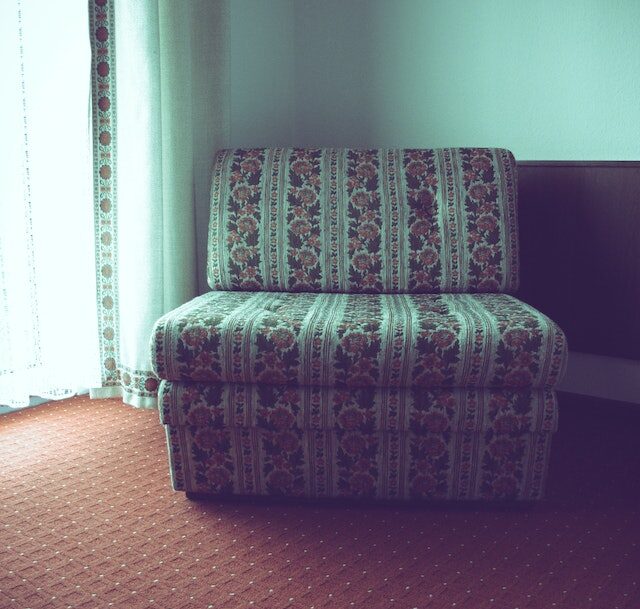Carpet is a wonderful flooring option, especially if you have young children: it’s warm underfoot and provides a little extra cushioning for stumbling tots who may otherwise severely injure themselves. However, this dreamy substance can become a true nightmare if you ever experience water damage, because a carpet is notoriously difficult to completely dry.
When we talk about water damage, most of us think about a cataclysmic event that necessitates the help of a Portland water damage restoration expert, like gushing waterfalls pouring into your basement and destroying everything. However, there are many different levels of this problem, including ones that might be more every day, such as spilling water on the floor or a malfunctioning appliance beginning to drip.
Today, we’ll look at the step-by-step process of destroying funky odors in your carpet using simple tools that you can get at the hardware store, saving you thousands of dollars in carpet replacement.
Step 1: Double-check for safety
First and foremost, you must ensure that it’s safe for you to access the room. If it’s just a little damp spot in the middle of the floor, you might not need to worry too much, but if there’s an ongoing leak, you need to contact a water damage remediation company, who can advise you on how to proceed. Depending on the level of damage, you may be looking at unstable floors or even sparking electrical outlets, which could start a fire. If you’re ever in doubt, turn off the electricity to the room using the circuit breaker and get in touch with a professional.
Step 2: Remove all excess water
If you have the go-ahead to begin, the first step is to get rid of the excess water – and this means getting out your wet vac. First, use a wet/dry vac or carpet extractor to pull all the extra water out of the carpet; you can rent these from a local hardware store for a decent price. Should you already own a wet/dry vac, use a carpet attachment for the hose. Do not use a normal vacuum for this part, as it is not designed to handle water.
Step 3: Dry the carpet thoroughly
Next, you’ve got to take your carpet from soaking to super dry. Start with normal bath towels: lay them out on the floor and stomp on them to pull up any water that the wet/dry vac missed. Open all the windows to improve air circulation, then get fans and aim them at the wet carpet; you can also rent extra-duty fans from the hardware store that are made for just this purpose. Do not use heat sources like blow dryers to speed up the process, as this can damage the carpet.
Step 4: Vacuum to remove any debris
Don’t put that wet/dry vac away just yet! Now it’s time to pull out any debris that may have been left from the flooding event. Ensure that both the carpet and the wet/dry vac are both dry; then, using the carpet attachment as before, run it across the carpet to grab trapped dirt and debris. This will also help to remove surface-level mold spores, reducing their colonies and preventing further damage.
Step 5: Spray with a vinegar solution
Vinegar is renowned for its ability to destroy microorganisms without ruining fabric; it doesn’t stain as bleach does, nor is it corrosive like other cleaners. Take a 50/50 solution of cleaning vinegar and water, spray it across the affected area, and allow it to sit for 15-20 minutes.
Step 6: Blot and rinse the carpet
Now that you’ve killed some of the bacteria and mold hiding in the carpet, you should blot away some of the extra moisture with clean towels or sponges. Be sure to rinse the towels or sponges regularly so that you’re not just reapplying the contaminated vinegar solution. You’ll want to keep going until the carpet is damp but not completely try, as we still need a bit of the vinegar in place for the next part.
Step 7: Apply a baking soda solution and watch the magic
While vinegar is a great disinfectant on its own, it becomes all the more powerful when you add baking soda to the process. You’re likely familiar with what happens when you combine vinegar and baking soda: you get a harmless, bubbly concoction thanks to the fact that you’re mixing an acid and a base. In this circumstance, the carbon dioxide produced by the reaction will help to lift any hidden dirt and mold up to the surface of the carpet so that you can vacuum it away. Baking soda itself is also very good at removing smells, because many odors are acidic in nature, and this super-powder is a mild base that neutralizes them.
Liberally apply the baking soda to the carpet, using a carpet brush to work it deep into the surface. Then, allow it to sit overnight to ensure that it’s successfully neutralized all the vinegar and absorbed all the musty smells.
Step 8: Vacuum and dry
You’re almost done! Now, all that’s left to do is vacuum up the remainder of the baking soda, the debris that it’s revealed, and all remaining odors. Once more, you’ll utilize your wet/dry vac and its carpet attachment to remove the rest of the cleaning solution; double-check that the carpet is now completely dry and utilize fans as necessary.
When in doubt, rely upon the professionals
The above steps are a quick and easy way to destroy nasty smells in your carpet, but they might not be able to tackle every circumstance of funky carpet scents. If you find that you can still detect a musty odor from the carpet, it may be time to contact a water damage remediation expert that can give your floors a professional carpet cleaning. These experts have industrial-grade cleaners and heavy-duty tools that can deeply penetrate the fibers of the carpet, extracting hidden contaminants that you were not able to remove with your wet/dry vac and cleaning solution.



